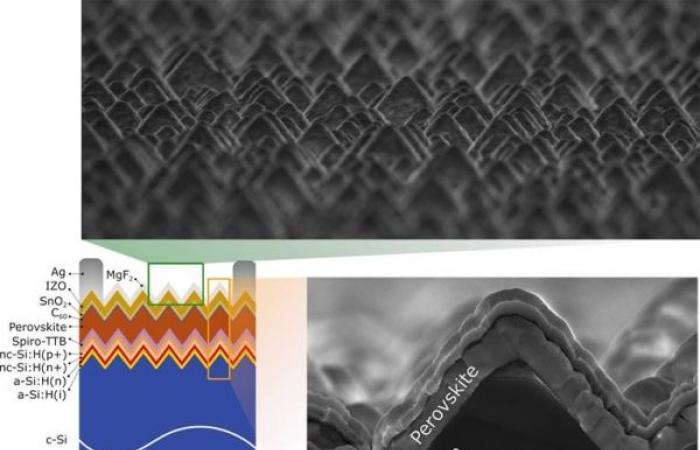We show you our most important and recent visitors news details KAUST team develops high-efficiency, industry-ready perovskite-silicon tandem solar cells in the following article
Hind Al Soulia - Riyadh - JEDDAH — Perovskite-silicon tandem solar cells hold the promise of power conversion efficiencies well above the theoretical limit of silicon alone. But their outdoor performance in a hot and sunny climate has not been fully investigated — until now.
A team from King Abdullah University of Science and Technology (KAUST) have fabricated efficient, two-terminal monolithic perovskite-silicon tandem solar cells and tested them outdoors. The tandem device that has resulted from this research is both more stable than conventional perovskite cells and, importantly, optimized for use in industry.
“Professor Stefaan De Wolf and his team have stolen a march on many research teams working in this area around the globe. It is excellent to see the outputs from the KAUST Solar Center being progressed in this way through the next stages of technology readiness. This very much helps to realize the impact of long standing KAUST Research investments in the Center,” KAUST Vice President for Research Donal Bradley said.
The findings of KAUST Research Scientists Dr. Erkan Aydin and Dr. Thomas Allen, and colleagues in De Wolf’s group, released Monday in Nature Energy, indicate that the temperature dependence of both the silicon and perovskite bandgaps — which follow opposing trends — shift the current-matching-optimization point away from that for two-terminal tandems under standard test conditions.
“These findings imply that the ideal bandgap of the perovskite cell for optimal device performance should be lower than previously thought. Such lower-bandgap perovskites are known to be much more stable,” said De Wolf.
The team’s finding could hold great promise for the commercialization of perovskite-silicon tandem solar cells. Their findings indicate that bromide-lean perovskite top cells, with narrower bandgaps at standard test conditions are potentially the best way forward to boost the efficiency of conventional silicon solar cells.
After fabrication, the tandem cells were put into the KAUST outdoor photovoltaic test field station, providing the first real operational test for such devices in KSA and confirming the improvement in performance.
“For years, the gold standard of solar power has been silicon, representing over 95% of the market. This publication is the first of its kind to report on tandem silicon-perovskite cells outdoors and demonstrate their viability — a critical next step for enabling new and more efficient solar technology to enter the market. We look forward to working with Dr. De Wolf through our impact-focused research translation program to scale up this technology, truly one of society’s grand challenges,” said Vice President of Innovation and Economic Development (I&ED) at KAUST, Kevin Cullen.
Only KAUST and a handful of other institutes around the world are able to make these devices entirely in one laboratory. Due to this ability it was possible to undertake the whole activity at KAUST under a Near-Term Grand Challenge project administered through the KAUST Research and I&ED offices. Professor De Wolf’s research on solar energy generation is also central to the newly launched KAUST Research Circular Carbon Initiative. — SG
These were the details of the news KAUST team develops high-efficiency, industry-ready perovskite-silicon tandem solar cells for this day. We hope that we have succeeded by giving you the full details and information. To follow all our news, you can subscribe to the alerts system or to one of our different systems to provide you with all that is new.
It is also worth noting that the original news has been published and is available at Saudi Gazette and the editorial team at AlKhaleej Today has confirmed it and it has been modified, and it may have been completely transferred or quoted from it and you can read and follow this news from its main source.

